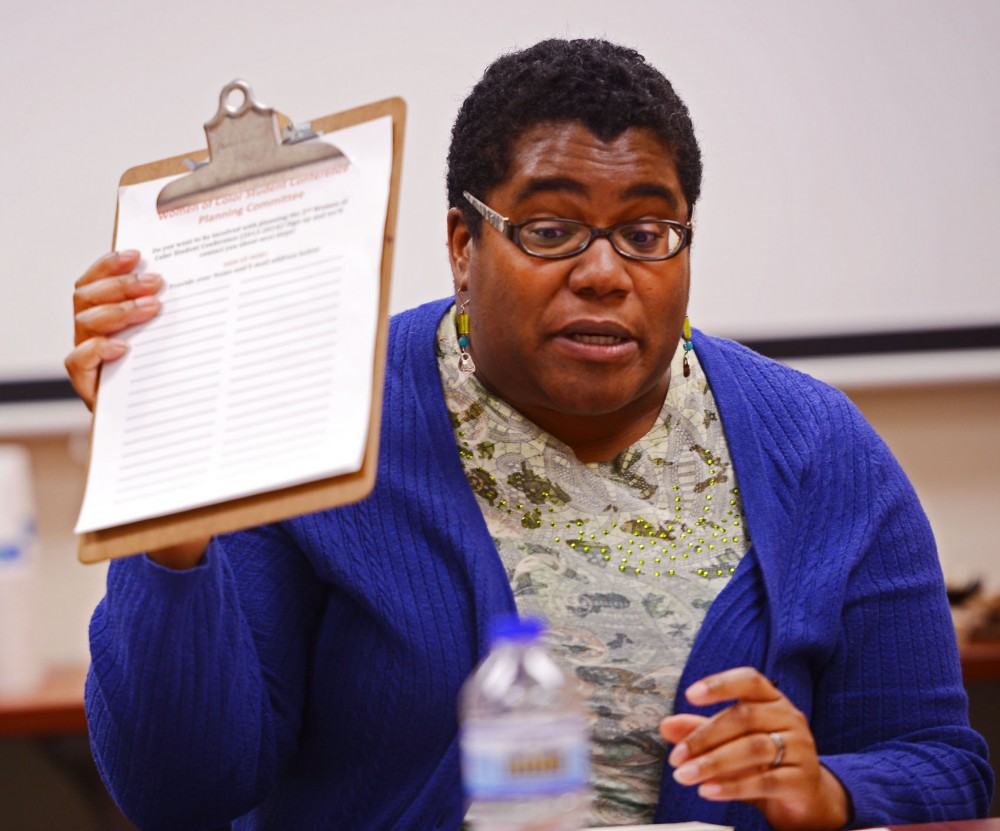The need for more accessible cultural studies courses and women of color in student government dominated a discussion at the Women’s Center on Wednesday.
Students, staff and faculty discussed changes they want to see for women of color at the University of Minnesota at the annual “Women of Color” advisory meeting.
The meeting shifted topics from women of color on campus to the issues faced by students of color. But discussion of too few cultural studies courses that qualify for a liberal education requirement took precedence.
Those at the meeting said students would be more likely to take classes in cultural studies if they fulfilled a liberal education requirement.
“If you can’t find a course to fit liberal requirements, you’re not going to take it,” said Amber Jones, a student intern at the Women’s
Center.
The Council on Liberal Education decides which courses qualify for liberal education requirements. Currently, students enrolled in the College of Liberal Arts after 2010 have to fulfill 35 credits of liberal education courses by graduation.
Jones said the University has a role to play in making cultural studies courses more accessible to students.
“It’s really important that the University makes it easier for students to explore these topics while still staying on track to graduate,” she said.
Anise McDowell, student engagement coordinator for Student Unions and Activities, said the fact that students can fulfill their diversity requirement without ever having a professor of color is a problem.
Students and staff said having a cultural studies course fulfill more than one liberal education requirement would also help bring students to the classrooms.
It’s important that students study other cultures because it helps them be more aware of other types of people, psychology junior Emeka Okafor said.
“It’s going to allow people to step outside of their comfort zone,” he said. “It can only do more good than bad.”
A call for more women of color as leaders
The meeting also focused on the push for more women of color in leadership roles on campus.
Because women, and especially women of color, have little representation in leadership positions in student government groups, the Women’s Center and other multicultural groups are working to empower women of color to be leaders on campus, Jones said.
“We need voices on the board,” said Cianna Edwards, a member of the Black Student Union. “But we can’t complain about not having a voice if we’re not going to be a voice.”
Jones said the initiative to get more women of color in leadership roles is driven by the need to diversify student government.
“Being able to bring different backgrounds and lifestyles into the work that is being done on campus is really important because at the end of the day we have 30,000 undergraduate students on campus, and they all come from different backgrounds,” Jones said.
Okafor agreed.
“It’s really important to have a diversity of perspective to understand the total picture,” he said.


